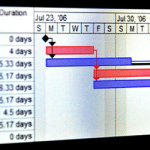
I once experienced a project horror story whereby a piece of equipment was snowed in at a previous project, delaying the project by several weeks until a transport vehicle could get to the stranded machine. Since there are relatively few of these around, the project either had to wait or additional costs had to be incurred to procure another one. Managing these types … [Read more...]












